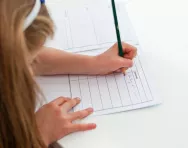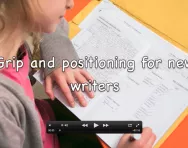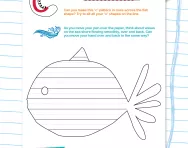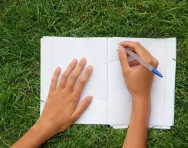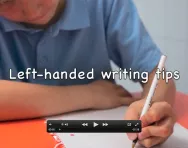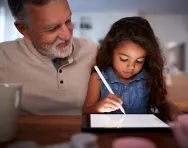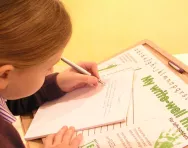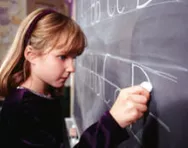Important update from TheSchoolRun
For the past 13 years, TheSchoolRun has been run by a small team of mums working from home, dedicated to providing quality educational resources to primary school parents. Unfortunately, rising supplier costs and falling revenue have made it impossible for us to continue operating, and we’ve had to make the difficult decision to close. The good news: We’ve arranged for another educational provider to take over many of our resources. These will be hosted on a new portal, where the content will be updated and expanded to support your child’s learning.
What this means for subscribers:
- Your subscription is still active, and for now, you can keep using the website as normal — just log in with your usual details to access all our articles and resources*.
- In a few months, all resources will move to the new portal. You’ll continue to have access there until your subscription ends. We’ll send you full details nearer the time.
- As a thank you for your support, we’ll also be sending you 16 primary school eBooks (worth £108.84) to download and keep.
A few changes to be aware of:
- The Learning Journey weekly email has ended, but your child’s plan will still be updated on your dashboard each Monday. Just log in to see the recommended worksheets.
- The 11+ weekly emails have now ended. We sent you all the remaining emails in the series at the end of March — please check your inbox (and spam folder) if you haven’t seen them. You can also follow the full programme here: 11+ Learning Journey.
If you have any questions, please contact us at [email protected]. Thank you for being part of our journey it’s been a privilege to support your family’s learning.
*If you need to reset your password, it will still work as usual. Please check your spam folder if the reset email doesn’t appear in your inbox.
Handwriting in the National Curriculum
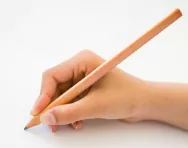
Handwriting today often seems a dying art. Computers, tablets and smartphones are now so prevalent that many of us rarely need to put pen to paper.
But despite the fact that technology is eclipsing handwriting, primary school children are still expected to learn to write legibly and fluently, with the National Curriculum setting out targets for every school year.
Why handwriting matters
The new National Curriculum for primary schools, introduced in 2014, gives more weight to handwriting than the previous curriculum. But why does it matter, when typing is almost always an option?
Professor Jane Medwell is a leading academic in the field of handwriting, and supports the Write Your Future campaign, which is raising awareness of the importance of handwriting for children.
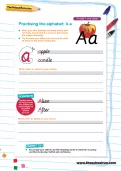
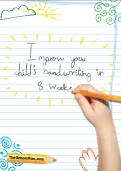
Improve handwriting in 10 minutes a day
- Step-by-step handwriting guide
- Over 200 worksheets
- From patterning to cursive
‘Handwriting is vital,’ she says. ‘It helps children learn in a way that typing doesn’t. In the early years, the process of forming letters helps children master phonic awareness, while later in primary school, it’s important for note-taking, and helps information enter the brain far more effectively than copying and pasting on the computer.’
Children who write by hand are better connected to their work and more engaged in learning. There’s also a clear link between a child’s handwriting and the quality of the content of their written work.
Handwriting and the National Curriculum
The National Curriculum specifies that primary school children should work towards mastering handwriting that is fluent, legible and, eventually, speedy.
There are specific targets for each year group.
In Year 1, pupils should be taught to:
- Sit correctly at the table, holding a pencil comfortably and correctly.
- Begin to form lower case letters in the correct direction, starting and finishing in the right place.
- Form capital letters.
- Form the digits 0 to 9.
- Understand which letters belong to which handwriting ‘family’ (a group of letters that are formed in the same way).
In Year 2, pupils are expected to:
- Form lower case letters of the correct size, relative to one another.
- Start using some of the diagonal and horizontal strokes needed to join letters, and understand which letters are best left unjoined.
- Write capital letters and digits of the correct size, orientation and relationship to one another.
- Use spacing between words that is appropriate for the size of the letters.
In Years 3 and 4, children should:
- Continue to develop their joined-up handwriting.
- Increase the legibility, consistency and quality of their handwriting – for example, ensuring that downstrokes of letters are straight and parallel, not sloping.
In Years 5 and 6, children are taught to:
- Write with increasing legibility, fluency and speed.
- Choose which shape of a letter to use, and decide whether or not to join specific letters.
- Choose the writing implement that is best suited for a task.
Handwriting and SATs
When it comes to KS2 SATs, handwriting in itself may seem to play a minor role. ‘A very small percentage of marks is allocated to handwriting, and that is assessed purely on neatness,’ Jane says.
However, good handwriting matters – and can affect your child’s SATs results – for two main reasons.
Firstly, children whose handwriting has become automatic are likely to produce a greater volume of higher quality work, and accordingly get better marks for their written work.
‘Children who can write with automaticity produce far better compositions,’ Jane explains. ‘This is because when handwriting is automatic, they don’t have to devote cognitive attention to it, which allows them to focus on the content of their work.’
Automaticity means your child can produce letters without having to think about the process. One way to test this is to get them to write out the alphabet in the correct sequence. ‘We expect seven-year-olds to produce 12 letters a minute, and 11-year olds to produce 22,’ says Jane.
Secondly, if your child’s handwriting isn’t legible, they stand to lose marks in their SATs because their answers are unclear. For example, the examiner may not be able to tell if they have capitalised a word or not, or even whether they’ve spelt it correctly.
This is a very real concern: in 2017, teachers expressed their dismay when a number of children lost marks in their spelling, punctuation and grammar test for not forming commas and semi-colons accurately enough.
Handwriting and teacher assessment
Writing in KS2 is assessed by teachers rather than by test. From 2018, there is a specific requirement for children to produce joined-up handwriting to meet the expected standard for Year 6.
This doesn’t mean that every single letter has to be joined. ‘By Year 5 or 6 we see children dropping the joins that feel unnatural, and this is completely acceptable,’ Jane says.
Your child’s teacher will assess their handwriting based on their independent writing. They can take into account handwriting books and exercises, but these aren’t sufficient on their own.
Handwriting and special educational needs
If your child is physically unable to write, they will be allowed to use a computer for their SATs and for teacher-assessed writing.
If they are physically able to write but have special educational needs that affect their handwriting, such as dyslexia or dysgraphia, they may be allowed to use a computer for some of their writing.
When a child uses a computer for assessed writing, the spelling and grammar check functions should be switched off to get an accurate picture of their abilities in these areas.
5 tips to help your child with handwriting
You can help your child develop automaticity with their handwriting, and keep up with the expectations of the National Curriculum.
1. Practise little and often. ‘Handwriting is best practised in short bursts, so it doesn’t become boring,’ Jane says. ‘Just five minutes a night is enough.’
2. Use different writing implements. ‘One of the best things children can do is write using lots of different media: not just pens and pencils, but chalks and their finger in sand,’ Jane explains. ‘This gives them lots of experience, and getting to use different tools is a good incentive to practise.’
3. Concentrate on letter shapes. When your child is learning to write, focus on them forming their letter shapes correctly (for example, writing the letter c with an anticlockwise movement from top to bottom). ‘Size and orientation follow on much later,’ Jane says.
4. Keep up the momentum. ‘There is often a big push on handwriting in KSt1, then we move on and give it little attention, but many children aren’t writing automatically by this stage,’ says Jane. Keep doing short handwriting exercises as your child moves through KS2 to help them develop speed and fluency.
5. Ask for help if you’re concerned. ‘If you’re worried about your child’s handwriting, talk to their teacher. Explain your concerns, ask to see their work, and be persistent,’ Jane advises. ‘If there’s an underlying problem like dyslexia, dyspraxia or dysgraphia, help is available, but what your child needs is individual to them.’
Write Your Future is an initiative by Berol and Papermate.

